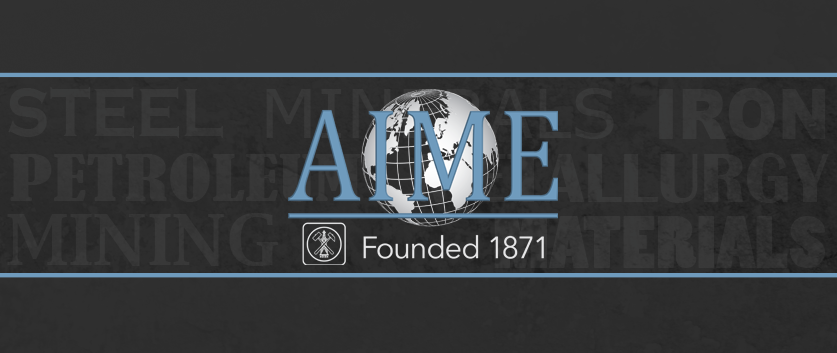
Marker Dedication in Wilkes-Barre, PA for AIME's 145th Anniversary
Historical marker set for area mining group
An organization born in the aftermath of one of the region’s worst mining disasters and that grew to international proportions is the latest facet of local history to be commemorated with an official marker.
The Pennsylvania Historical and Museum Commission will dedicate a historical marker for the American Institute of Mining Engineers at 3 p.m. Monday, May 16 — the 145th anniversary of the organization’s founding. The ceremony will be held at 16 S. River St. in Wilkes-Barre, near West Market Street.
“We want the public to be there,” said mining engineer Michael C. Korb, one of those who spearheaded the drive to get the marker. “I feel it’s something people should be proud of.”
Korb has been a member of the organization, now called the American Institute of Mining, Metallurgical and Petroleum Engineers, since 1961, and its member society, the Pennsylvania Anthracite Section of the Society for Mining, Metallurgy and Exploration.
The first meeting of the American Institute of Mining Engineers was held May 16, 1871 in the Wyoming Valley Hotel — the Guard Center now stands at the site. There were 22 people in attendance, 16 of whom were from Northeastern Pennsylvania, Korb said.
Today the organization has about 150,000 members worldwide, including a strong presence in Asia, South America and Europe, he said.
Korb described the era when anthracite fueled the industrial revolution of the 1800s as an exciting time, when science was developing from an art and new technology was being created.
The American Institute of Mining Engineers worked with issues related to the industry such as more economical production, improving mining technology, education and welfare of miners and, especially, safety, Korb said.
When the Institute was first founded, the September 1869 Avondale Mine Disaster, in which 110 miners died while they were trapped underground in a mine fire, was still in recent memory.
“Safety wasn’t what people wanted it to be at first. That was a big reason for the development of the society,” Korb said.
Korb, who lives in Wapwallopen and formerly lived in the Hazleton area, has been employed by the state Department of Environmental Protection’s Bureau of Abandoned Mine Reclamation for eight years.
But the western Pennsylvania native, who holds degrees in mining engineering, has worked a variety of mining-related jobs in several different states, and is at least the fourth generation in his family to work in the industry.
He is proud of his background: Mining was the basis for a lot of economic growth, and it continues to be important, he said.
“I like to talk to kids about mining, about how important it is,” he said.
His interest in the subject and 50-plus years working in the field led Korb to join the push to get the historical marker for the American Institute of Mining Engineers.
Korb received dozens of letters of support, including from “nearly all of the anthracite region senators and representatives,” Luzerne County and Wilkes-Barre City officials, and cultural and civic organizations.
He said the application took about a year to work on before it received approval from the Pennsylvania Historical and Museum Commission last March.
“It was fun doing the research. We had to put a lot of paperwork together,” he said.
Korb said he likes to “see the blue markers along the road,” and noted there are a lot in Northeastern Pennsylvania.
Since its creation by act of Congress in 1913, the Pennsylvania Historical and Museum Commission has administered the historical marker program, which is intended to spotlight the state’s noteworthy people and places.
There are more than 2,000 of the markers, mainly cast-aluminum signs, throughout the state. To date, Luzerne County has 67 historic markers, Lackawanna County has 33 and Wyoming County, 13.
The most recent markers to be placed in the region are for Eckley Miners’ Village in Foster Township, dedicated on May 15, 2015; and the Baltimore Mine Tunnel Disaster in Wilkes-Barre, dedicated Jan. 22, 2014.
While it’s important to remember the disasters, good things about the industry also should be commemorated, Korb said.
“There’s a lot more to mining than the mine disasters,” he said.
570-821-2072
The text on the area’s latest historical marker will read: “Founded in 1871 in Wilkes-Barre, this organization of mining professionals was formed to attain a more economical production of useful minerals and metal, and to improve the safety and welfare of those involved in the mining industry. It was one of the earliest associations of engineering professionals in the nation and known as an Engineering Founder Society.”
For information about Pennsylvania’s historical markers, visit www.phmc.pa.gov
See the Citizensvoice.com article here.

